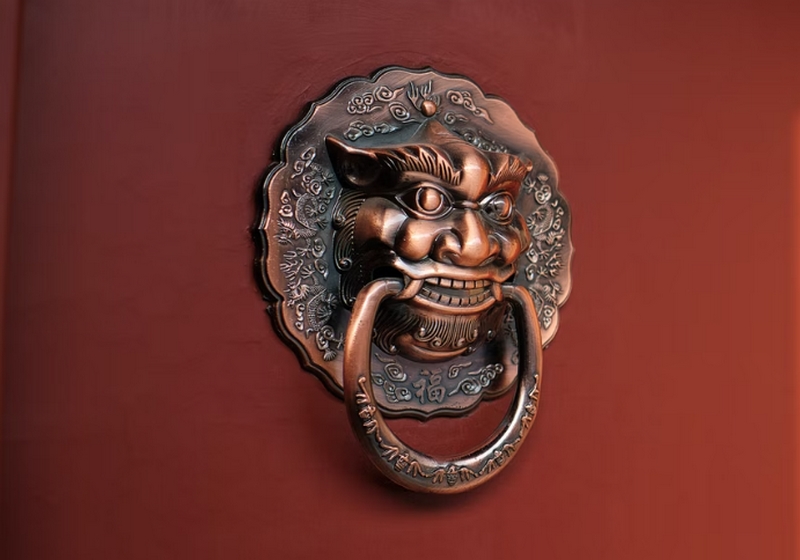
WEST SYSTEM 410 Microlight® to the Rescue!
by Jim Derck—GBI Technical Advisor
Above: Jim Derck describes how he used 410 Microlight in a metal door repair. Image: A knocker on a metal door. Photo by Felix Luo on Unsplash
At the end of moving day, after many large items had passed through the doorway, our house’s metal door was left with a nasty crease about a foot long. The door was made of steel and had a foam core. The needed repair was just a fairing application with no structural component.
For best bonding, we usually recommend removing paint from a surface so the epoxy attaches to a stable substrate. In this case, however, I assumed the paint had been applied to the steel under production conditions and was securely bonded. So I sanded the finish coat of paint in the area of the dent with 80-grit sandpaper until the primer was exposed. Since I wanted to finish this repair in one day, I used WEST SYSTEM 105 Resin with 205 Fast Hardener.
The crease was less than ¼” deep so heat buildup from using the fast-cure hardener wouldn’t be a problem. I added enough 410 Microlight™ Filler into the mixed resin/hardener until I had a non-sag mix. I then troweled this into the crease on my metal door. It was a warm day, so I did not have to wait too long for the thickened epoxy to start to stiffen. This indicates that the potential to exotherm has passed, and it was safe to start using supplemental heat.
I used two clamp-on utility lights with reflectors to direct the heat toward the repair area to speed up the complete cure of the fairing compound. I positioned the lamps so the repair surface got good and warm to the touch but not so hot that I could not place my hand on it.
After several hours at elevated temperatures, the epoxy was hard enough to start sanding. I did not want to make a lot of dust with a power sander, so I simply wrapped 80-grit sandpaper around a block of wood to help maintain a flat fair surface. The Microlight fairing compound sanded down to a fair surface quickly. We recommend a coat of neat epoxy over the faired Microlight Filler to protect it from solvents in paints, so I applied a coat of 105/205 to the repair area.
WEST SYSTEM Epoxy does not shrink into the coarse sanding scratches like paint would, so the finished epoxy film will not show any scratches.
Back to the utility lights for heat to accelerate the epoxy cure. After the epoxy cured hard, I used a water wipe with an abrasive pad, dried the surface, and then sanded it with fine sandpaper to even out any irregularities and provide an anchor pattern for the paint. Finally, I applied a coat of acrylic enamel, which dries fast. The metal door, now fully repaired, looked like new by the end of the day!





